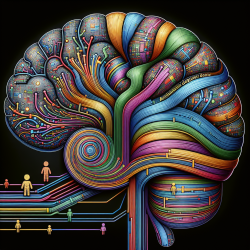The field of neuroprediction is rapidly evolving, offering new insights into how brain-based measures can enhance our understanding of human behavior. A recent study titled Age of gray matters: Neuroprediction of recidivism provides compelling evidence that brain-age measures derived from MRI data can outperform traditional chronological age in predicting recidivism among offenders. This breakthrough has significant implications for practitioners working to improve therapeutic outcomes and reduce antisocial behavior.
The Power of Brain-Based Measures
The study highlights the development of a brain-age model using structural MRI data from incarcerated males. By analyzing the inferior frontal cortex and anterior-medial temporal lobes, researchers found that brain-age measures could more accurately predict recidivism compared to models that only used chronological age. This suggests that brain-based data may provide a more precise account of individual differences in physiological and neurocognitive aging processes.
Implications for Practitioners
For practitioners, these findings underscore the importance of incorporating brain-based measures into risk assessment models. By doing so, they can improve the accuracy of predictions related to antisocial behavior and tailor interventions more effectively. Here are some practical steps practitioners can take:
- Stay Informed: Attend conferences and webinars focused on the latest developments in neuroprediction and brain imaging.
- Collaborate with Neuroscientists: Partner with experts in neuroimaging to integrate brain-based measures into your practice.
- Advocate for Research: Encourage further studies to explore multi-modal brain measures that combine structure, function, connectivity, and diffusion.
- Educate Stakeholders: Share insights with colleagues, parents, and policymakers about the benefits of using brain-age measures in therapeutic settings.
A Call to Action for Further Research
The study also identifies new brain systems contributing to recidivism, which has clinical implications for treatment development. However, it acknowledges limitations such as the cost-benefit ratio of implementing these techniques widely and the need for multi-modal imaging data to improve accuracy further.
This research opens up exciting possibilities for enhancing our understanding of antisocial behavior and improving therapeutic interventions. Practitioners are encouraged to delve deeper into this area by accessing the original research paper: Age of gray matters: Neuroprediction of recidivism.
Together, we can harness the power of neuroprediction to create more effective strategies for reducing recidivism and promoting positive behavioral change.










